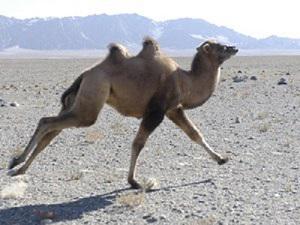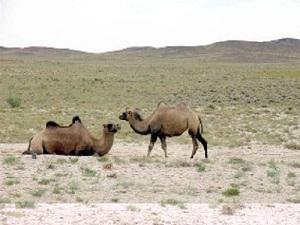Gang Chen
Other projects
27 Feb 2009
Promoting the Desert Communities Sustainable Development Methods for Better Wild Bactrian Camels Conservation in Xinjiang, China (Phase I)
7 Jun 2010
Promoting the Desert Communities Sustainable Development Methods for Better Wild Bactrian Camels Conservation in Xinjiang, China (Phase II)
This project aims to help save the critically endangered wild Bactrian camels in Lopnur Nature Reserve by eliminating the conflicts between local economic development and nature conservation.

A Wild Bactrian Camel Run in Western Lopnur Desert in Jan 2008.
The increasing desertification is threatening the ecological environment and the IUCN listed critically endangered species wild Bactrian camels living mainly in Lopnur National Nature Reserve adjacent to the world’s second biggest flowing desert Takelamagan. The nearest county to the Lopnur National Nature Reserve is Ruoqiang county where farmers and herdsmen are making even great threats to the survival of the wild Bactrian camels. Raising sheep is a main business of income source for local communities. Feeding more sheep, many farmers and herdsmen bring their sheep into the adjacent Lopnur Reserve for extra wildly growing grasses and plants as forage, which are also very limited in stock to support the survival of about 500 existing wild Bactrian camels here. Furthermore, local people use directly wild grasses and wild trees as fuel for cooking because of the shortage of conventional energy such as coal, gas and electricity there.

Wild Bactrian Camels Enjoy More Wild Plants inside Lopnur Desert Without the Competition of Raised Sheep for Forage.
In this project, my team is going to use our artificial planting technology of branchy tamarisks and desert-living cistanches and the methane pit technology to help local communities in order to solve the contradictions between conserving the wild Bactrian camels and developing sustainable rural communities in Ruoqiang county, Xinjiang.
After the successful implementation of this project, the grass-root initiatives and enthusiasm aroused by the achievements of my project will impose more positive influence on reversing desertification and turning more desert land into forested land with sustainable economic benefits. The traditional inefficient sheep-grazing business will be replaced gradually by the high-return business of planting branchy tamarisks and desert-living cistanches.
Without the harmful influence from the uncontrolled sheep grazing in the reserve, the ecological environment in the Lopnur wild camel nature reserve will be improved gradually, the natural supply of feeding plants for wild camels on its internal oasis and other places within the reserve will be preserved only for this endangered species of wild Bactrian camels (other wild species can’t live long here because of the extremely harsh desert environment) and the number of wild camels can then be maintained at the current level, the future reproduction of this species will also be sustained in consequence. A sustainable development pattern benefiting both the human being and the wild life will be realized eventually around the Lopnur nature reserve in Xinjiang.